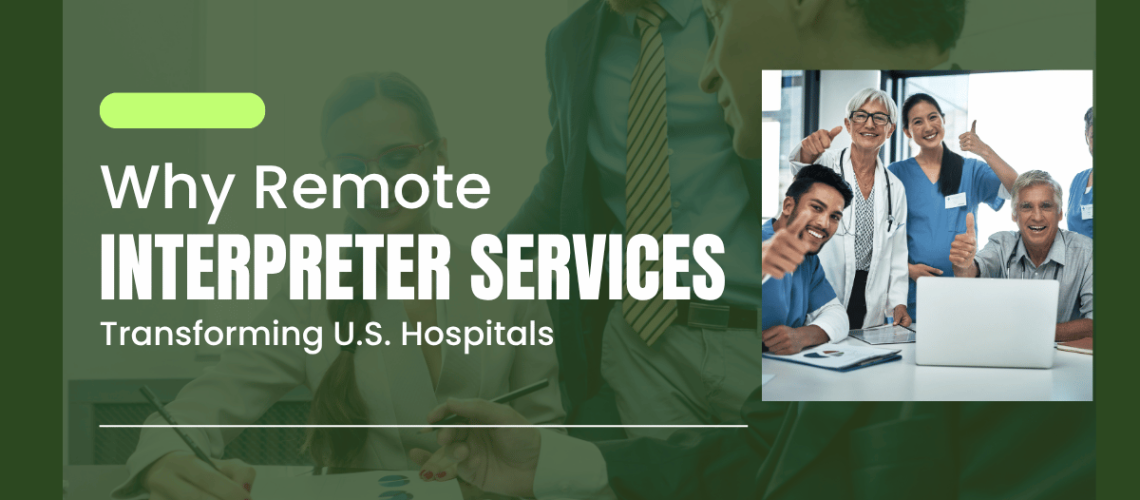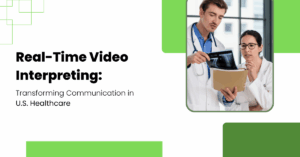In healthcare, communication is everything. A single misunderstanding can affect diagnoses, treatment plans, or even patient safety. For hospitals in the USA, where patients come from diverse linguistic and cultural backgrounds, language access has become a critical part of delivering quality care. Remote interpreter services delivered via video or phone are now transforming how hospitals connect with patients who speak little or no English, ensuring they receive accurate, respectful, and timely medical attention.
Why Language Access Matters in Hospitals
Hospitals serve people at their most vulnerable moments. When patients cannot fully understand their healthcare provider, the risk of miscommunication skyrockets. Something as simple as describing pain symptoms or understanding discharge instructions can become a barrier to recovery. Remote interpreter services bridge this gap by giving medical teams immediate access to professional interpreters in hundreds of languages, often within seconds. This not only improves patient experience but also helps hospitals avoid costly errors and strengthens trust between patients and providers.
The Power of Remote Interpreting: Video and Phone Options
Two main types of remote interpreter services are widely used in hospitals:
- Video Remote Interpreting (VRI): Perfect when non-verbal cues are important, like mental health sessions, pediatric care, or discussing sensitive treatments. VRI is also essential for patients who use American Sign Language, as it allows them to see the interpreter clearly.
- Over-the-Phone Interpreting (OPI): Best for quick, straightforward interactions like triage, medication clarifications, or scheduling appointments. It’s fast, cost-effective, and available around the clock.
Having both options ensures hospitals can match the right service to the right situation, making communication smooth and efficient.
Why Professional Interpreters Are Essential
Not every bilingual person is equipped to interpret in a hospital setting. Professional interpreters are trained to handle complex medical terminology, ensure accuracy, and remain impartial. They protect patient privacy, maintain confidentiality, and help doctors deliver care without the risk of misinterpretation. By working with qualified professionals, hospitals ensure that patients fully understand their care and can actively participate in decisions about their health.
Privacy, Compliance, and Trust
Healthcare communication involves sensitive patient information. Remote interpreter services designed for hospitals operate on secure platforms that comply with privacy regulations and maintain patient confidentiality. Choosing a trusted provider means hospitals can guarantee both speed and security, giving patients peace of mind while meeting strict regulatory requirements.
Implementing Remote Interpreter Services Successfully
Hospitals that want to get the most from remote interpreting should focus on three areas:
- Easy Access: Provide quick-dial numbers for phone interpreting and dedicate tablets or carts for video sessions in high-traffic areas like emergency departments.
- Staff Training: Teach doctors, nurses, and administrative staff how to work effectively with interpreters, ensuring patients always feel included and respected.
- Clear Policies: Set guidelines for when to use interpreters—such as during consent discussions, diagnoses, and treatment explanations—so staff never have to question what to do.
The Benefits for Hospitals and Patients
Hospitals that invest in remote interpreter services see measurable benefits:
- Better patient outcomes: Clear communication reduces errors and improves adherence to treatment plans.
- Increased patient satisfaction: Patients feel heard, respected, and safe in their care.
- Cost savings: Fewer misdiagnoses, readmissions, or delays save both time and money.
- Improved reputation: Hospitals that prioritize accessibility stand out as leaders in patient-centered care.
Conclusion
Remote interpreter services are no longer just a convenience; they’re a necessity for hospitals in the USA. By breaking down language barriers, they help healthcare providers deliver safer, more effective, and more compassionate care. Whether through video or phone, these services ensure that every patient’s voice is heard, every story is understood, and every decision is made with confidence.







